NaNoTeaMo, Day 28: “A Bug-Bitten Black Beipu Beauty of a Tea”
If you’ve spent any time around hardcore Taiwanese tea drinkers, you probably ran into the term “bug-bitten”. And probably thought of this.
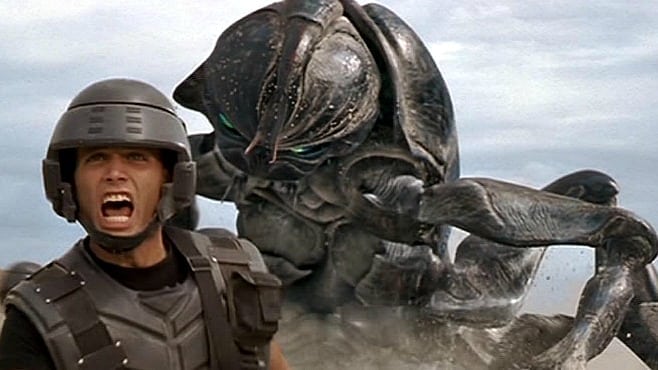
No? Just me? Anyway . . .
“Bug-bitten” refers to teas that come from tea plants where pest involvement is encouraged. In Taiwan, there is a common pest called a leafhopper (Jacobiasca formosana). The bug species is common throughout much of Asia. They are especially drawn to the phloem found in stems, leaves and buds of tea plants.
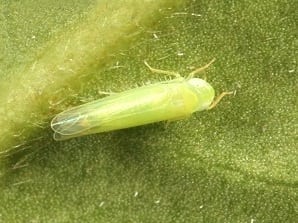
Once they’ve bitten into an unsuspecting tea leaf, an unusual chemical reaction occurs – producing two compounds, monoterpene diol and hotrienol. This chemical reaction is a defensive maneuver by the tea plant to attract spiders that feed on the li’l leafhoppers. However, there is an interesting side-effect to this.
The resulting chemical reaction also changes the flavor of the tea leaves, imbuing them with a honey-like sweetness. Appearance-wise, the tea leaves also develop white tips at their ends. This is where the term “white-tipped oolong” is derived. And speaking of white-tipped oolongs . . .
Dong Fang Mei Ren – or “Oriental Beauty”, as it is so often (and uncomfortably) translated – is the most famous bug-bitten tea of them all. So much so, that other parts of Taiwan have also tried withholding pesticide use to duplicate the sweet flavor. Gui Fei and Mi Xian oolongs come to mind.
The Oriental Beauty style of oolong is characterized by more open, twisty leaves given a 70% oxidation treatment. No roasting is administered. The cultivar of tea plant used to produce it is Chin Shin Dah Pan.
Now that all that learnin’ is out of the way, I guess I should mention this is my absolute favorite style of oolong. Without peer. I’ve had many duplicates from Fujian and Yunnan in China, but none of them quite beat the good ol’ Taiwanese source. Imagine my surprise when I discovered there was a fully oxidized, black tea version of the stuff. Yes, it’s time for another World Tea Expo flashback.
Of the many booths I visited my first day on the Expo floor, I came across one for a company I’d never heard of called Cameron Tea. Finding them was rather easy; it was like my “weird tea” senses were tingling. I talked a little bit with the guy in charge of the booth, and my eyes bee-lined to the Taiwanese black teas, while we were in mid-conversation.
In fact, I think I accidentally cut the guy off when I yelped, “Black Oriental Beauty?!”
Out of context, I’m sure my exclamation came off as a bit uncomfortable.
The Cameron rep informed me that it hailed from the Beipu region in Taiwan.
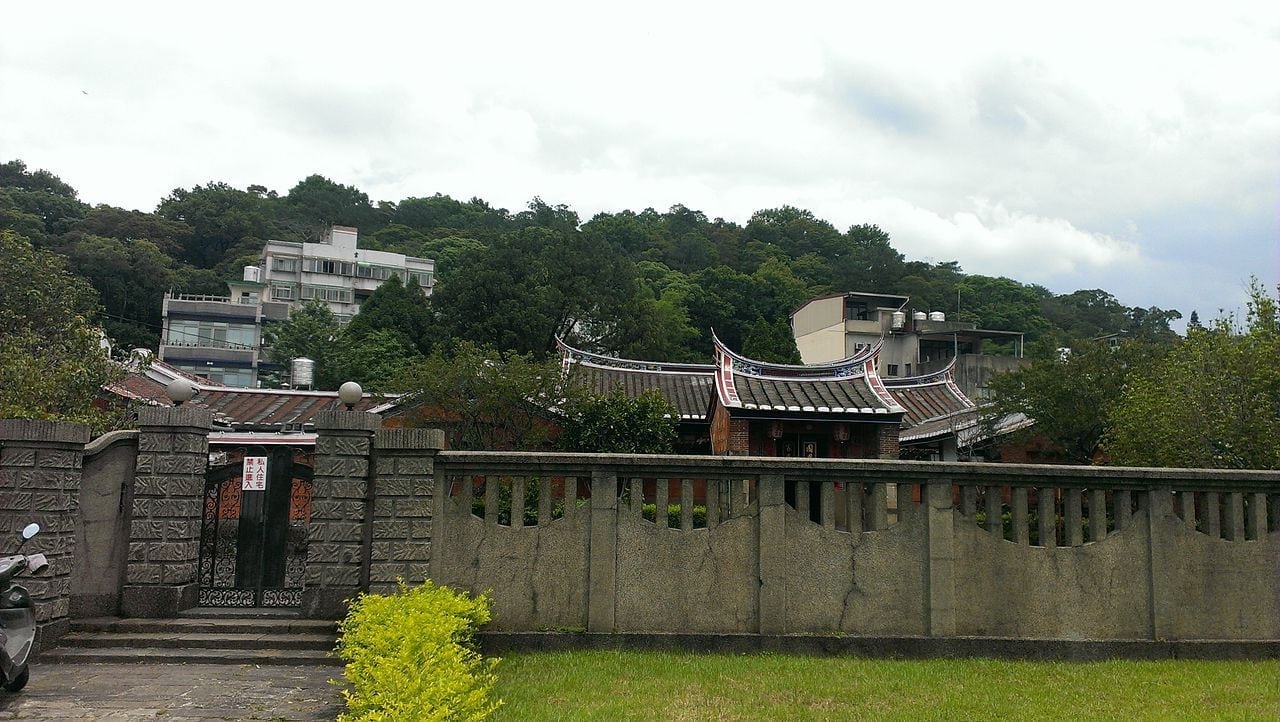
Cameron Tea’s specialty was wholesaling from different parts of Taiwan, including Ali Shan and Sun Moon Lake. They also carried a regular Oriental Beauty oolong from Beipu. My eyes sparkled with a pleading expression, and he threw me a sample of each – both the oolong version and the black tea version.
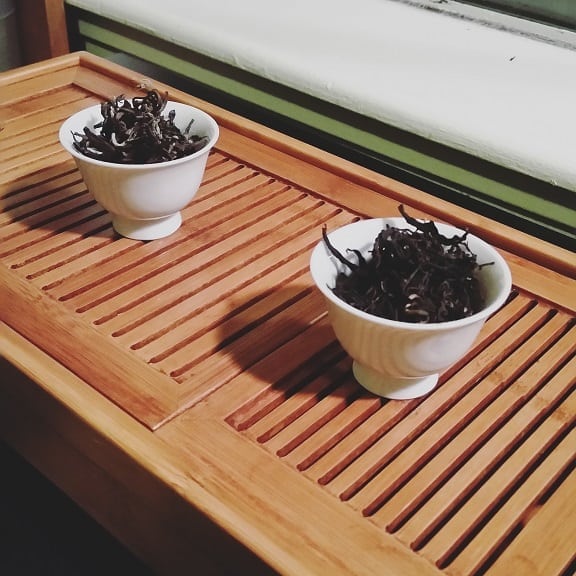
The leaves for the oolong version were multi-colored with pale tips at the ends.
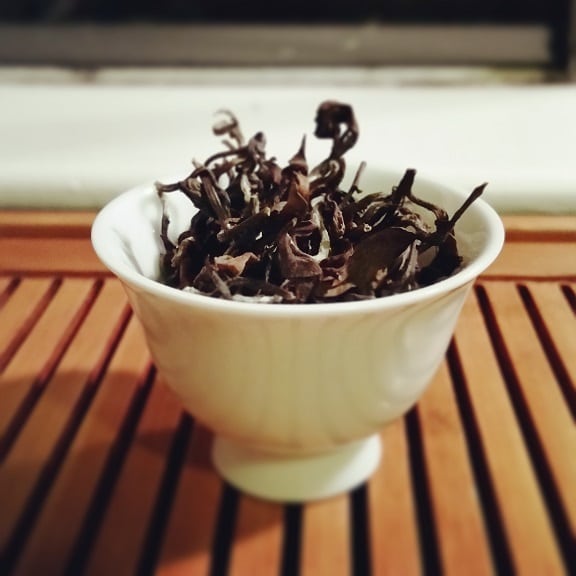
Shades of purple, brown and blue were present on the twisty, twiny leaves. And the smell they gave off reminded me of . . . strawberry ice cream dipped in melted Honeynut Cheerios. Weird, not sure why that particular palate memory was activated, but I’ll stick with it.
The black tea version had a much “darker” aroma and appearance.
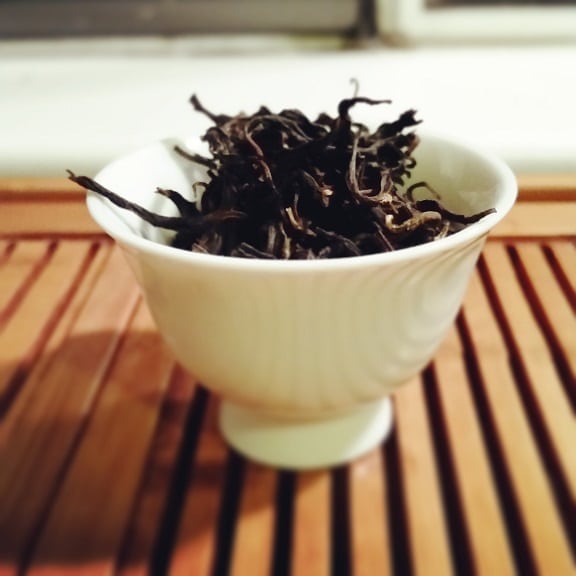 Sure, there were some tippy leaves in the fray, but very few. The rest looked like a Ruby 18 black on first sight. Not a bad way to be compared, though. The smell reminded me of molasses, for some reason.
Sure, there were some tippy leaves in the fray, but very few. The rest looked like a Ruby 18 black on first sight. Not a bad way to be compared, though. The smell reminded me of molasses, for some reason.
As much as I didn’t want to, I had to adhere to two different styles of brewing of these. For the Oriental Beauty oolong, I had to do a water temp of about 185F. Whereas, with the Oriental Beauty black tea, I could go up to a full boil. I didn’t really have the time for a full gongfu session with both, nor did I think the oolong could hold up to a three-minute brew. So, I measured out a tablespoon of each leaves, placed them both in a 6oz. gaiwan, and steeped both at a minute, but at their desired temperatures.
The Oriental beauty oolong colored to a light gold with a familiar honeysuckle fragrance. On taste, it was like sugarplum fairies were dousing my tongue in kegs with honey straight from the comb. This was one of the fuller-bodied Oriental Beauties I’d sampled . . . and wow! Did that sound suggestive?!
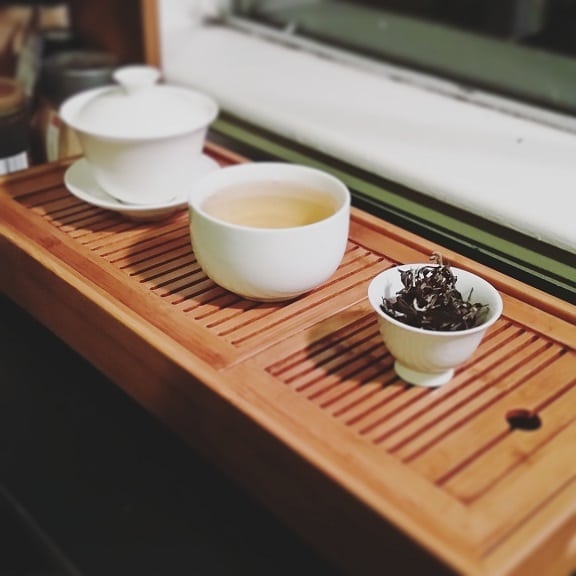
I owe most of the body and increased texture to the slightly upped brew time, though. However, it gave me a good basis for comparison before going up against the black tea version.
Even at just a minute, the black Oriental Beauty colored quite brilliantly, resulting in an almost cherry-wood colored liquor.
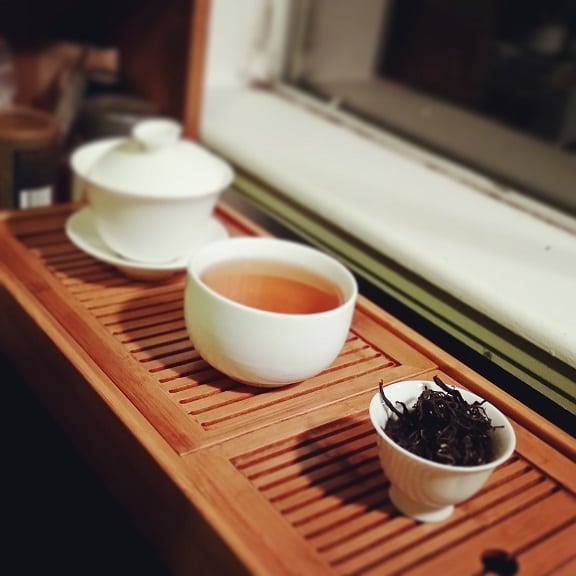
The aroma was very similar to the oolong, but packing more of a malty punch. On first sip, I was surprised by how toasty it came across. Formosan mint and a bit of astringency were the first sensations I detected, followed closely by the requisite honey bend, and a finish reminiscent of cotton candy. The only detractor was the drier aspects to the taste. Definitely a black tea that needs to be gongfu’d to be believed.
As for a favorite, well . . . to be diplomatic I’m going to say I like both. But I’m more inclined to go for the flutterier/fruitier oolong version than the black. The darker sibling does have its merits, but it’s strictly a morning beverage – at least, to my palate. The oolong could be had anytime, any day, and any which way. But when I need to take a dip on the dark side, I’ll flash that bug-bitten black Beauty a wink.

P.S. In the interest of full disclosure, I have something I must confess. As I was putting both these teas away, my sister and niece’s kitten started clawing at my door – howling for attention. In the midst of telling her to shut-up . . . I accidentally put them both in the same bag.
That should make my next brewing session quite interesting.
P.P.S. On the suggestion of an online tea friend, I lowered the brewing temperature. The day after this sipping session, I prepped a travel mug of the Oriental Beauty black tea, but I used 185F water, instead. The results were on par with the oolong. So much so, I had to edit the blog accordingly.
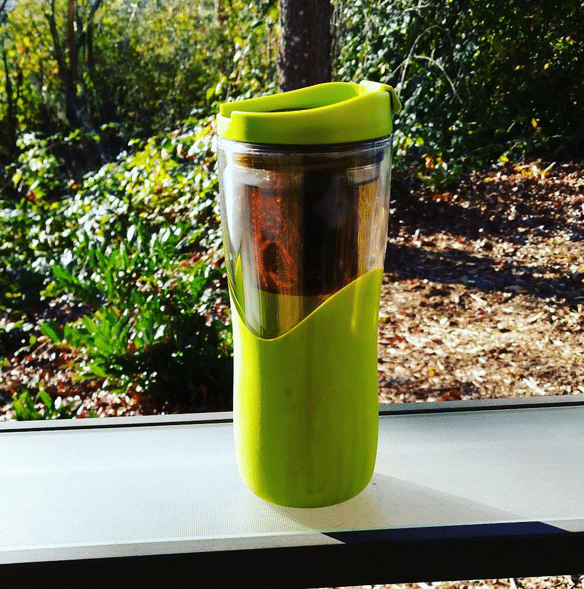
Leave a Reply